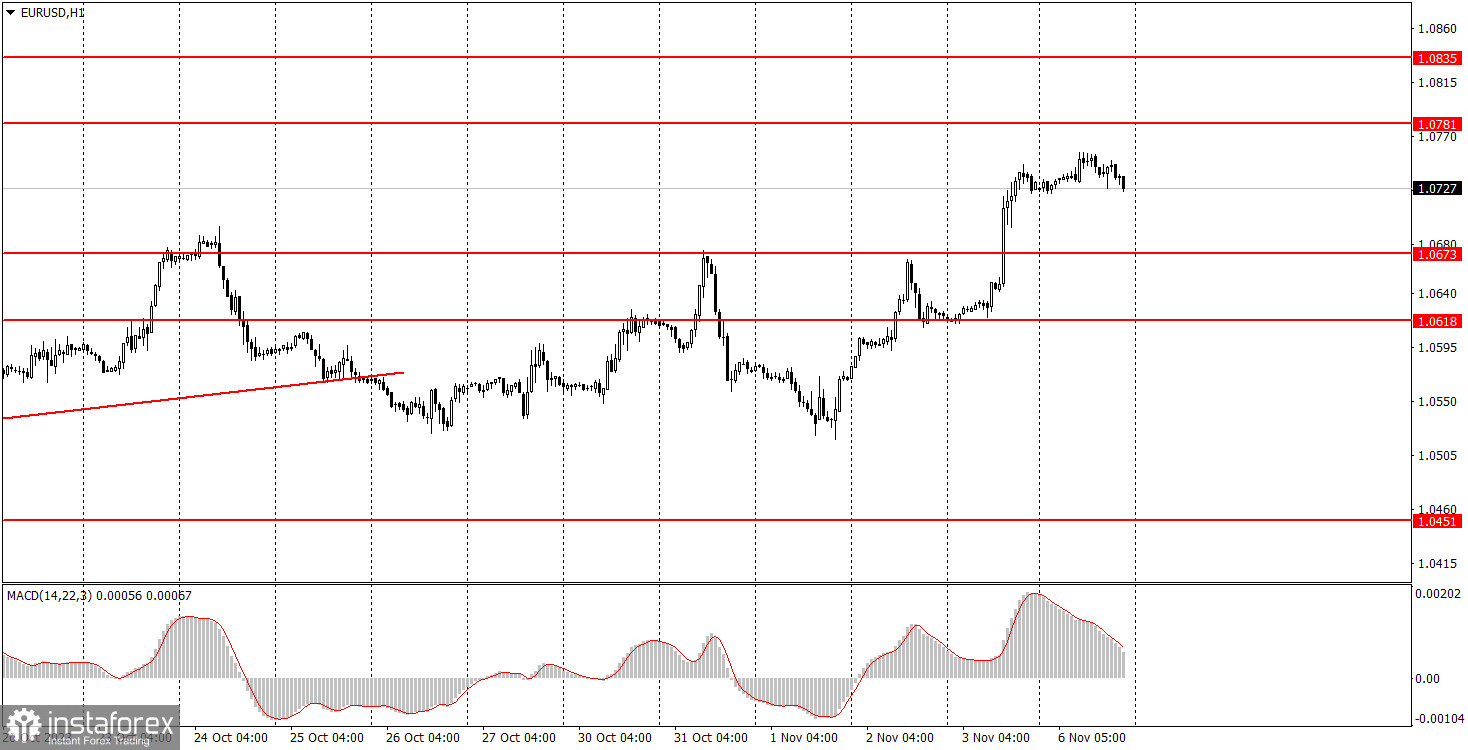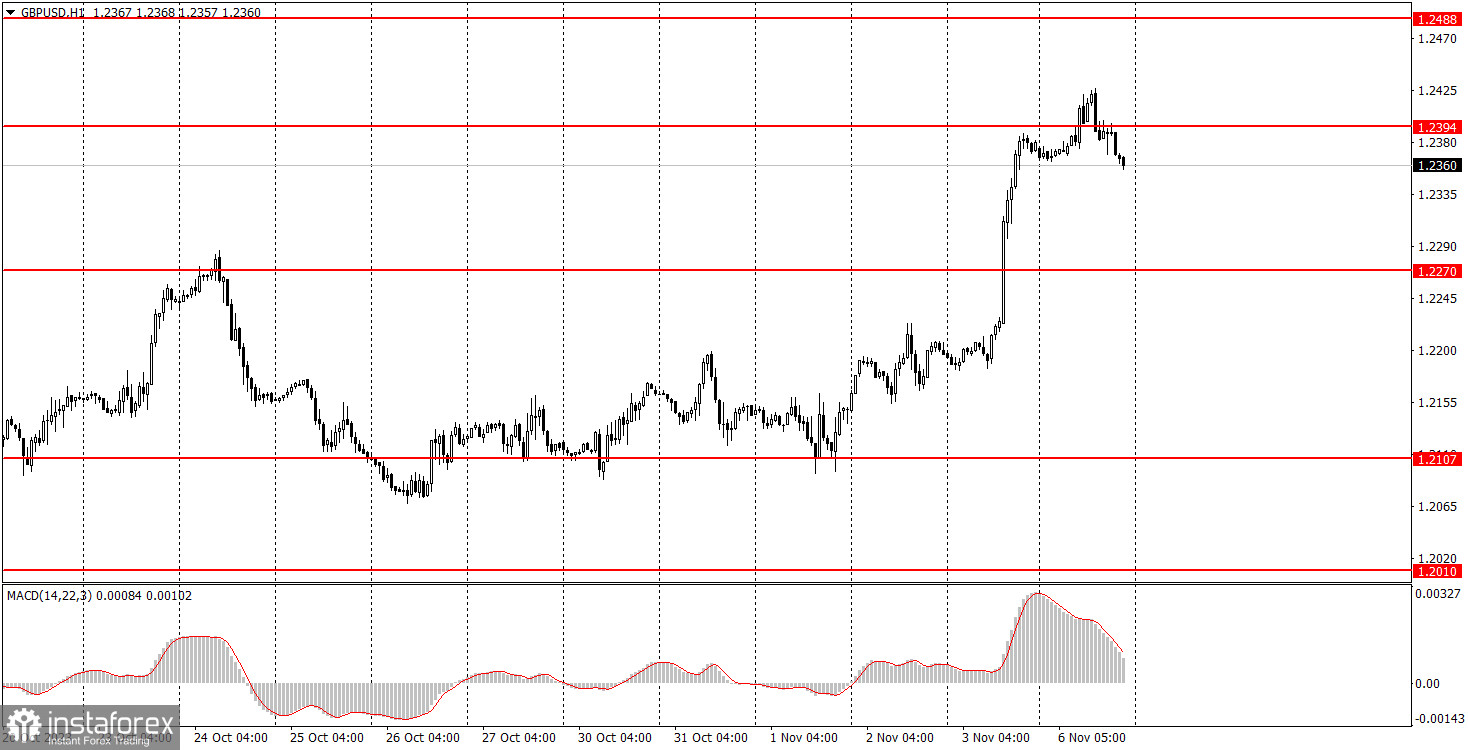Analysis of macroeconomic reports:

There are hardly any macroeconomic events on Tuesday, and none of them hold any importance. German industrial production and eurozone producer prices will be in focus. Meanwhile, the U.S. will release import and export data. These are all relatively minor reports, capable of moving the market by 10-20 pips at most. Therefore, we do not expect the macroeconomic background to significantly impact the movement of both currency pairs. Most likely, we are in for another trading day with low volatility and limited movement, which has been the trend over the past month.
Analysis of fundamental events:

Among the fundamental events on Tuesday, we can highlight the speeches by representatives of the European Central Bank and the Federal Reserve. This includes Enria, Barr, Jeffrey, Waller, Williams, and Logan. However, as previously noted, speeches from ECB and Fed representatives currently play a more ambient role in influencing their respective currencies. Neither the Fed nor the ECB are currently ready to resume raising interest rates, and their recent policy meetings were held not long ago. After those meetings, the market received comprehensive information about the central banks' plans regarding monetary policy and inflation. In any case, these speeches may start to change the Banks' policy direction, but we shouldn't expect immediate reactions from the market.
General conclusion:
Tuesday sees no important events and publications. We expect low volatility to persist, and both currency pairs may start a downward retracement, which could be the start of an extended decline.
Basic rules of a trading system:
1) Signal strength is determined by the time taken for its formation (either a bounce or level breach). A shorter formation time indicates a stronger signal.
2) If two or more trades around a certain level are initiated based on false signals, subsequent signals from that level should be disregarded.
3) In a flat market, any currency pair can produce multiple false signals or none at all. In any case, the flat trend is not the best condition for trading.
4) Trading activities are confined between the onset of the European session and mid-way through the U.S. session, post which all open trades should be manually closed.
5) On the 30-minute timeframe, trades based on MACD signals are only advisable amidst substantial volatility and an established trend, confirmed either by a trend line or trend channel.
6) If two levels lie closely together (ranging from 5 to 15 pips apart), they should be considered as a support or resistance zone.
How to read charts:
Support and Resistance price levels can serve as targets when buying or selling. You can place Take Profit levels near them.
Red lines represent channels or trend lines, depicting the current market trend and indicating the preferable trading direction.
The MACD(14,22,3) indicator, encompassing both the histogram and signal line, acts as an auxiliary tool and can also be used as a signal source.
Significant speeches and reports (always noted in the news calendar) can profoundly influence the price dynamics. Hence, trading during their release calls for heightened caution. It may be reasonable to exit the market to prevent abrupt price reversals against the prevailing trend.
Beginning traders should always remember that not every trade will yield profit. Establishing a clear strategy coupled with sound money management is the cornerstone of sustained trading success.
 English
English 
 Русский
Русский Bahasa Indonesia
Bahasa Indonesia Bahasa Malay
Bahasa Malay ไทย
ไทย Español
Español Deutsch
Deutsch Български
Български Français
Français Tiếng Việt
Tiếng Việt 中文
中文 বাংলা
বাংলা हिन्दी
हिन्दी Čeština
Čeština Українська
Українська Română
Română

